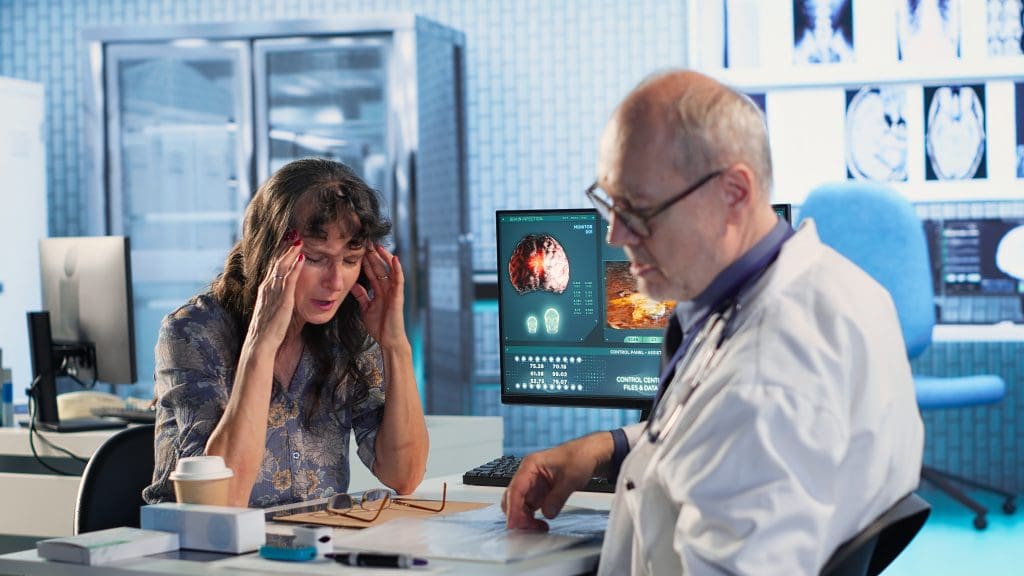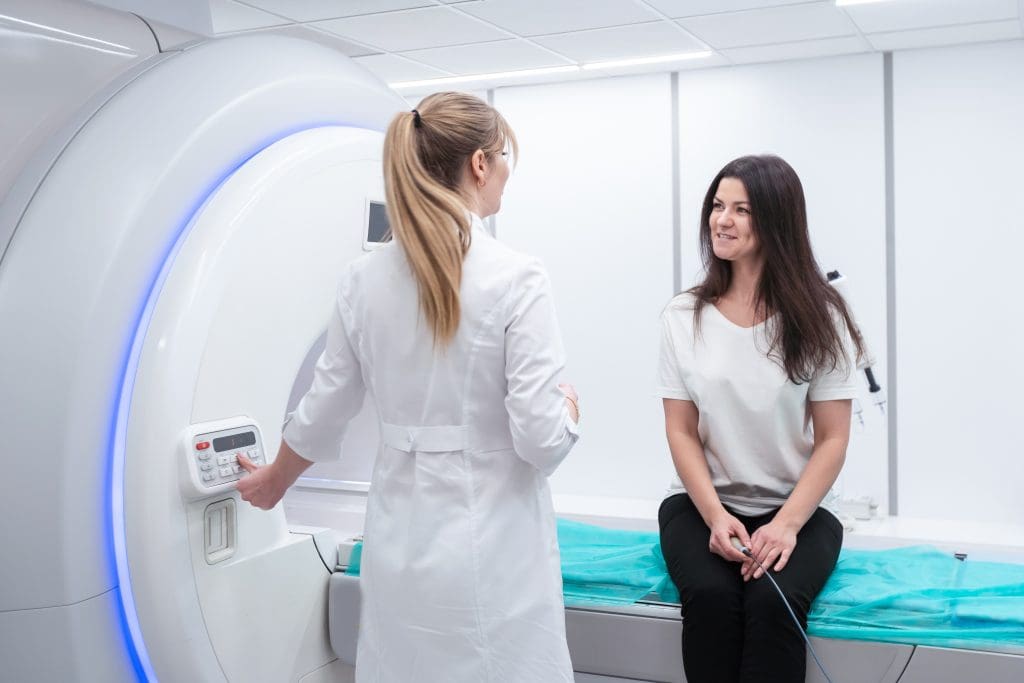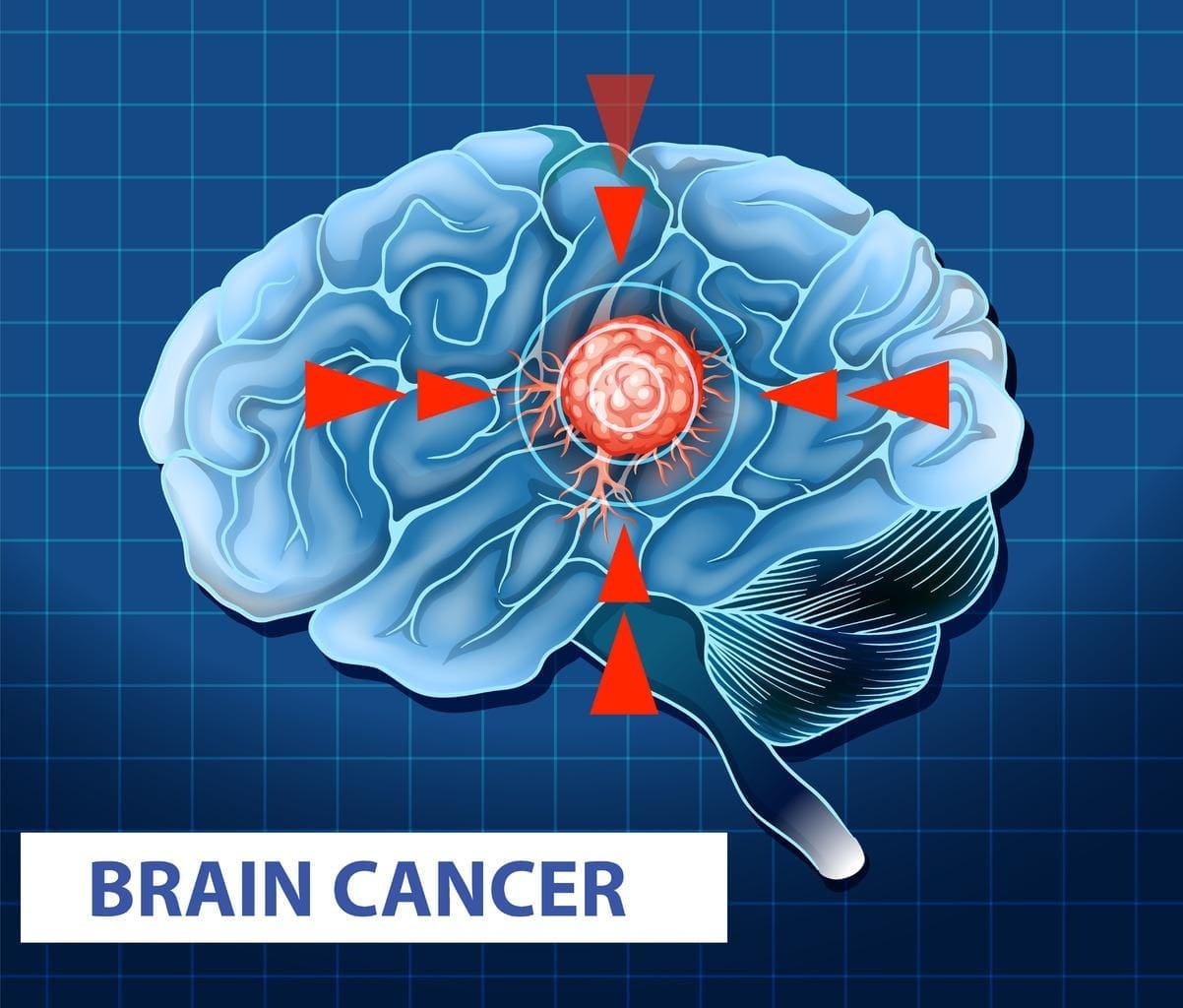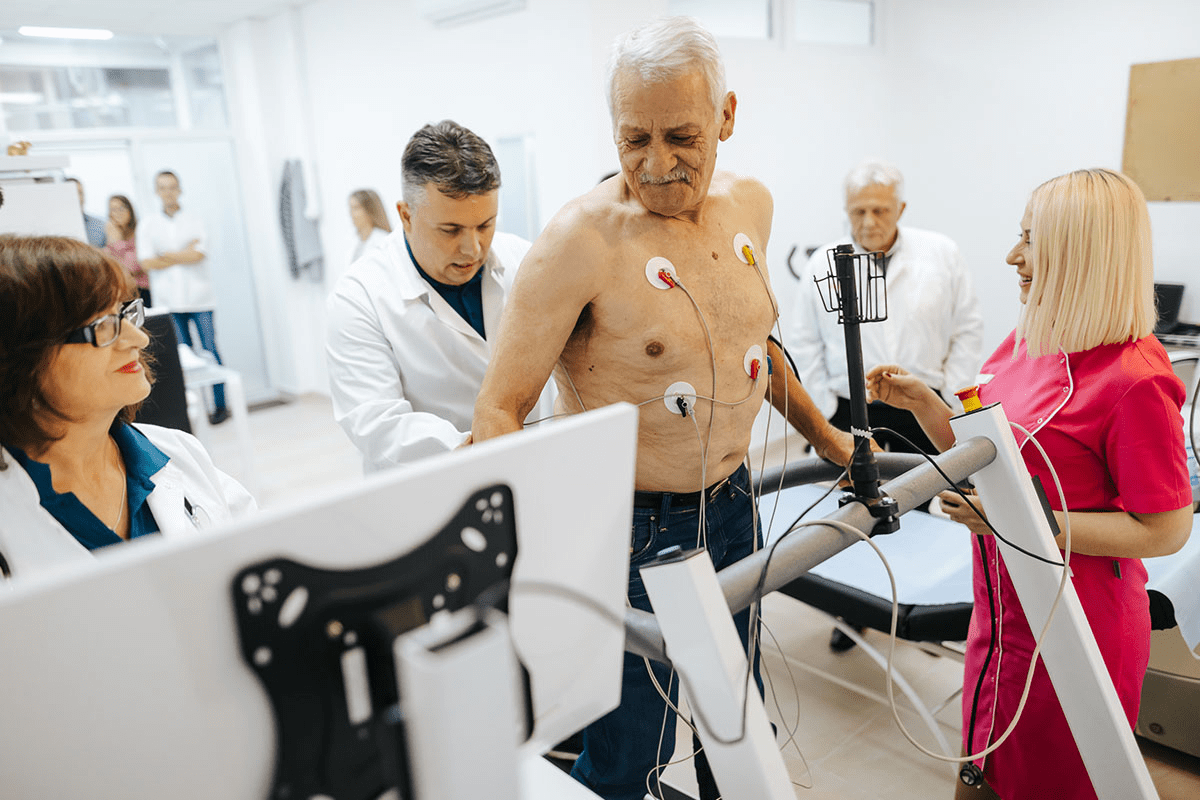Last Updated on November 26, 2025 by Bilal Hasdemir
A PET scan, or Positron Emission Tomography scan, is a test doctors use to find and manage health issues. Over 2 million PET scans are performed annually in the United States. It’s a common tool for doctors.
Many patients worry if a PET scan hurts. The answer is no, it’s not painful. You might feel a bit uncomfortable from lying down for a long time. But the scan itself doesn’t hurt.
Knowing what to expect during a PET scan can make you feel better. In this article, we’ll talk about the PET scan process. We’ll also address concerns about feeling comfortable during the scan.
Key Takeaways
- A PET scan is a diagnostic test that uses a radioactive tracer to detect disease.
- The PET scan procedure is generally considered painless.
- Patient comfort is a priority during the scan, with measures in place to minimize discomfort.
- Lying for a long time may cause some discomfort.
- Understanding the PET scan process can help alleviate anxiety.
What Is a PET Scan?
A PET scan is a special test that uses a tiny amount of radioactive material. It helps doctors see how well organs and tissues are working. This is key for diagnosing and tracking health issues.
Definition and Purpose of PET Scans
PET scans use a radioactive tracer to check how active different parts of the body are. This tracer is a sugar molecule with a radioactive tag. It’s injected into the blood and shows up in areas with lots of activity, like growing tumors.
The main goal of PET scans is to give detailed info on the body’s inner workings. They help spot diseases like cancer, brain disorders, and heart problems. This makes PET scans a critical tool in today’s medicine.
How PET Scans Differ from Other Imaging Tests
PET scans are different from MRI and CT scans. While MRI and CT scans show the body’s structure and blood flow, PET scans focus on how tissues are working. This is why PET scans are great for catching diseases early, even before they cause visible changes.
| Imaging Test | Primary Focus | Typical Applications |
| PET Scan | Metabolic Activity | Cancer diagnosis, neurological disorders, cardiovascular diseases |
| MRI | Structural Details | Soft tissue injuries, neurological conditions, certain cancers |
| CT Scan | Structural Details, Blood Flow | Injuries, cancers, vascular diseases |
Knowing how PET scans work helps patients understand their value. They offer deep insights that lead to better treatment plans.
The Pain Question: What to Really Expect

Many patients wonder if a PET scan is painful. Knowing what to expect can help ease their worries. A PET scan, or Positron Emission Tomography scan, is a painless imaging method that gives important diagnostic info.
The process has several steps, each adding to the experience. Knowing these steps can make patients feel more at ease and ready.
Common Sensations During a PET Scan
During a PET scan, patients might feel different sensations, but it’s not usually painful. Some might feel a slight pinch when the radioactive tracer injection is given.
After the injection, patients lie on a table that slides into the PET scanner. The table can be firm, which might be uncomfortable, mainly for those with back issues or who prefer softer surfaces.
The Radioactive Tracer Injection Experience
The injection of the radioactive tracer is key in the PET scan process. Patients might feel a minor sting or pinch as the needle is inserted, like having blood drawn. This feeling is temporary and usually not severe.
The tracer injection is quick, and the discomfort is minimal and short-lived.
Patient Comfort During Imaging
Patient comfort during imaging is a top priority for medical facilities. The PET scan procedure usually takes about 30 minutes to an hour. During this time, patients must stay very quiet.
To make patients more comfortable, some facilities offer blankets or pillows. They also control the room temperature to keep it comfortable.
| Comfort Measure | Description |
| Blankets or Pillows | Provided to help patients relax and stay comfortable during the scan. |
| Controlled Room Temperature | Adjusted to a comfortable level to minimize any discomfort due to cold or heat. |
| Stay Quiet Requirement | Patients are required to remain very quiet during the scan to ensure clear images. |
While a PET scan might cause some minor discomfort, it’s generally safe and painless. Knowing the process and what to expect can greatly reduce anxiety and make the experience more manageable.
Before Your PET Scan: Preparation Steps
A PET scan needs careful preparation for accurate results. This ensures a smooth process. Proper preparation is key to getting reliable diagnostic information.
Dietary Restrictions and Guidelines
Following specific dietary restrictions is critical for a PET scan. Patients often need to fast before the scan. The fasting time varies based on the PET scan type and healthcare provider’s instructions.
Dietary Guidelines:
- Avoid sugary foods and drinks for at least 24 hours before the scan.
- Follow a low-carbohydrate diet as instructed by your healthcare provider.
- Stay hydrated by drinking plenty of water, unless directed not to.
Medication Considerations
Telling your healthcare provider about your medications is important. Some medications may need to be adjusted or stopped before the scan. This prevents any interference with the test results.
| Medication Type | Action Required | Reason |
| Diabetes Medication | Adjust dosage or temporarily stop | To avoid affecting blood glucose levels |
| Certain antibiotics | Inform your doctor; possible adjustment | Potential interference with the tracer |
Imaging Test Preparation Guide
There are more steps to prepare for your PET scan. These include arriving early to complete paperwork, wearing comfortable clothing, and removing metal objects. This ensures a safe and effective scan.
Additional Tips:
- Plan to arrive at least 30 minutes before your scheduled scan time.
- Wear loose, comfortable clothing and avoid jewelry or clothing with metal parts.
- Be ready to share your medical history and any allergies.
By following these steps, you help ensure your PET scan is safe and effective. This gives your healthcare team the accurate information they need.
The Complete PET Scan as a Medical Imaging Procedure

Getting a PET scan is a simple process with several steps. It starts when you arrive at the imaging center. Knowing these steps can make you feel more at ease and ensure a smooth experience.
Arrival and Initial Preparation
When you arrive, you’ll fill out any remaining paperwork. Then, you’ll go to a preparation area. Here, you’ll get instructions on what to expect and can ask any questions.
First, you might change into a comfortable gown and remove any metal objects or jewelry. This is to avoid any problems with the imaging equipment.
The Glucose Tracer Test Process
The glucose tracer test is a key part of the PET scan. A radioactive tracer, often in the form of a glucose solution, is given through an injection. This tracer goes to areas of the body that use a lot of glucose, like tumors or inflamed areas.
The tracer is safe and leaves the body in a few hours. You’ll be told to drink lots of water after the test to help get rid of it.
The Scanning Process
Once the tracer has spread and built up in the target areas, the scanning starts. You’ll lie on a table that slides into the PET scanner.
The scanner picks up signals from the tracer to make detailed images of your body’s inside. The scan is painless, but you need to stay very quiet and not move to get clear images.
Duration and Position Requirements
The whole PET scan, from start to finish, takes about 2-3 hours. The actual scan time is usually much shorter, around 30-60 minutes.
You’ll need to lie very quietly on the scanning table. Moving can make the images blurry and less clear. To keep you comfortable and steady, you might get pillows or other support.
| Procedure Step | Duration | Patient Requirements |
| Initial Preparation | 15-30 minutes | Remove metal objects, change into a gown |
| Tracer Administration | 5-10 minutes | Receive glucose tracer injection |
| Scanning Process | 30-60 minutes | Lie very quietly on the scanning table |
Radiation Safety in Diagnostics
Radiation safety is key in diagnostic imaging, like with PET scans that use radioactive tracers. It’s important to use these tracers safely to lower radiation exposure for patients and staff.
Radiation Exposure Levels
PET scans use small amounts of radioactive tracers to diagnose and monitor health. The radiation from a PET scan is usually low, similar to or a bit more than CT scans. But, the dose can change based on the tracer type, patient size, and imaging facility’s protocol.
Managing radiation dose is vital to balance PET scan benefits with exposure risks. This means using the right amount of tracer and following strict protocols to reduce exposure.
Radioactive Substance in Medicine: Safety Protocols
Handling radioactive substances for PET scans follows strict safety rules. These rules protect patients and healthcare workers.
- Guidelines control the preparation, handling, and disposal of radioactive tracers.
- Staff must wear protective gear and follow safety steps when handling these substances.
- Imaging facilities have safety features like shielding to reduce radiation exposure in other areas.
Risk vs. Benefit Assessment
Choosing to have a PET scan means weighing its benefits against radiation risks. For most, the benefits of accurate diagnosis and treatment planning are worth the risks.
Healthcare providers should talk to patients about these points. They should consider the patient’s health, the diagnostic question, and other options.
In summary, PET scans involve radiation, but strict safety measures and careful handling of radioactive substances reduce risks. Their benefits make PET scans a valuable tool in medicine, used wisely and monitored closely.
Potential Side Effects and Discomfort
It’s important for patients to know about the side effects of PET scans. These scans are safe and non-invasive. But, some people might feel temporary side effects or discomfort.
Common Temporary Side Effects
Most people do well with PET scans. But, some might feel side effects from the radioactive tracer or the procedure. These can include:
- Discomfort or pain at the injection site
- Mild allergic reactions to the tracer
- Metallic taste in the mouth
- Nausea or headache
These side effects usually go away quickly without needing medical help.
When to Seek Medical Attention
Some side effects can be serious. It’s key to know when to get help. If you have symptoms like:
- Severe allergic reactions, such as difficulty breathing or swelling
- Increased heart rate or palpitations
- Dizziness or fainting
- Severe headache or confusion
Seek medical attention right away for these symptoms.
Recovery After the Procedure
Recovering from a PET scan is usually easy. The body gets rid of the tracer in a few hours. Patients should:
- Drink lots of fluids to help get rid of the tracer
- Avoid being close to pregnant women and kids for a few hours
- Go back to normal activities unless told not to by their doctor
Most people can go back to their usual activities right after the scan. This makes PET scans a good choice for getting checked out.
Special Considerations for Different Patient Groups
Getting a PET scan can be scary for some people. It’s safe, but it needs special care for different groups. This ensures safety and comfort for everyone.
Pregnancy and PET Scans
Pregnant women need extra care because of radiation risks. Doctors only do PET scans when it’s really needed. They look for safer options first.
Key Considerations for Pregnant Patients:
- They check if the scan is really needed.
- They use the least amount of radioactive tracer.
- They think about other imaging options.
PET Scans for Pediatric Patients
Kids are more sensitive to radiation. So, doctors adjust the dose based on age and weight.
| Age Group | Typical Dose Adjustment |
| 0-5 years | Significantly reduced dose |
| 6-12 years | Moderately reduced dose |
| 13+ years | Adult dose or slightly reduced |
PET Scans for Elderly or Anxious Patients
Elderly or anxious patients need extra help. They might get sedatives or need a comfortable place to lie.
Comfort measures for elderly or anxious patients include:
- Pre-procedure counseling.
- Use of relaxation techniques.
- Adjustments to the scanning environment for comfort.
Healthcare providers tailor PET scans for each patient. This way, they get the most information safely. It helps everyone feel better and get the right diagnosis.
Clinical Applications and Diagnostic Accuracy in Oncology
PET scans are key in oncology, showing how cancer works and grows. They help doctors find and treat cancer better.
Advanced Cancer Detection
PET scans are great for finding cancer early. They show how active tumors are. This helps doctors know how serious the cancer is and plan treatment.
Using PET scans for cancer has many benefits. These include:
- They find tumors well
- They check how tumors work and grow
- They help decide where to take biopsies and treatments
Neurological Disorder Diagnosis
PET scans also help with brain diseases like Alzheimer’s and Parkinson’s. They spot brain activity problems. This helps doctors diagnose and treat these diseases better.
PET scans are very accurate for brain diseases. Studies show they can:
| Condition | Diagnostic Accuracy |
| Alzheimer’s disease | 85-90% |
| Parkinson’s disease | 80-85% |
Cardiac Function Assessment
PET scans also check how well the heart works, mainly in heart disease. They look at blood flow and heart health. This helps doctors diagnose and manage heart problems better.
Using PET scans for heart health has many benefits. These include:
- They accurately check blood flow and heart health
- They help decide on treatments like opening blocked arteries
- They watch how treatments work and if the disease gets worse
In summary, PET scans are very useful in many areas like cancer, brain, and heart health. They are accurate and help doctors understand and treat diseases better.
Conclusion
PET scans are a key tool in medicine, helping doctors diagnose and manage diseases. They are a painless way to get important information. This makes them a good choice for patients.
The scan uses a special tracer that is injected into the body. Some people might feel a little discomfort during the injection. But overall, the PET scan is easy to handle.
Knowing what to expect can help patients feel more comfortable during a PET scan. This test is used in many ways, like finding cancer, diagnosing neurological disorders, and checking heart function.
In short, PET scans are a safe and painless way to get medical information. They help doctors make better decisions about treatment. This is why they are so important in healthcare.
FAQ
Is a PET scan a painful medical imaging procedure?
No, a PET scan is not painful. You might feel a bit uncomfortable when the tracer is injected. But the scan itself is non-invasive and doesn’t hurt.
What is the purpose of a PET scan?
A PET scan helps diagnose and monitor diseases like cancer and neurological disorders. It shows how cells and tissues in the body work.
How does a PET scan differ from other imaging tests like MRI and CT scans?
PET scans focus on how cells work, unlike MRI and CT scans which show body structure. This helps doctors understand and track diseases that affect cell function.
What can I expect during the PET scan procedure?
You’ll lie on a table that slides into a big machine during a PET scan. You’ll need to stay very quiet for a bit. The whole process is usually painless and takes about 30-60 minutes.
Are there any side effects associated with PET scans?
Some people might feel tired, have a headache, or feel queasy after a PET scan. These effects are usually mild and go away quickly.
How do I prepare for a PET scan?
To get ready for a PET scan, you might need to follow a special diet or avoid certain medicines. Your doctor will give you all the details you need to make sure the test works right.
Is a PET scan safe for pregnant women?
PET scans are not usually recommended for pregnant women because of the risk of radiation. But sometimes, the benefits might outweigh the risks. Your doctor will talk to you about this.
How is radiation safety maintained during PET scans?
There are strict rules to keep radiation exposure low during PET scans. These include careful handling of radioactive materials and guidelines for patient care.
Can I undergo a PET scan if I have a medical condition or anxiety?
Yes, PET scans can be done for people with medical conditions or anxiety. Your doctor will help you find a way to make the procedure comfortable and safe for you.






